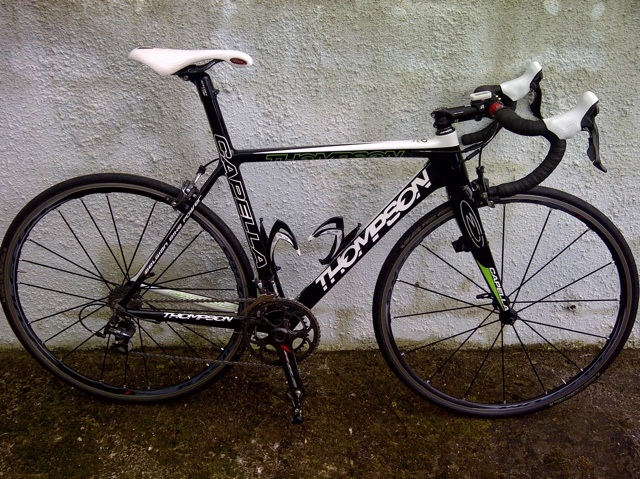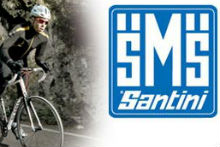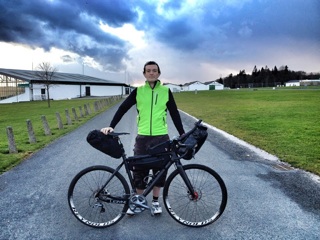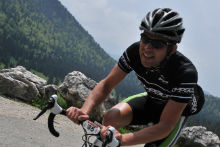In the previous articles, we’ve covered the background to European Sportives, how they differ from the UK versions and in particular our perception of a sportive. It is after all a race!
We also looked at targeting your main event and riding others to prepare. In this article, we’ll look at bikes, gearing and everything else you need.
So what does a typical Continental sportive racing bike look like? Well, the simple answer is very similar to any pro level road race machine. As we’ve already discussed, the front of the event is very much a top level race and the bikes reflect this, with most people riding what we would describe as ‘race’ orientated frames to achieve a classic road race position. Bikes marketed in the UK as ‘sportive’ bikes tend to be viewed as touring bikes, and are rarely seen at the front of the events as they are regarded as too slow. Pictured below is a typical continental sportive race bike – Belgian style!

In terms of gearing, keep an open mind and remember that many pros now race in the mountains on compact chainsets (36 inner ring is very popular) and use mountain bike cassettes for the toughest stages. (This trend is reflected in the 2013 Dura Ace group, which only has one chainset option with the cranks able to take any inner ring from 34 upwards). Like pros, the majority of people racing the sportive will tend to ride a traditional ‘double’ chainset of 53/39, even in the mountains, and change the cassette according to the terrain. Even in last year’s Tour du Mont Blanc (330km with 8,651m of climbing) the majority of the front riders used 53/39 with sprockets of 28 or 29 teeth.
The most important thing to remember though is that gearing is all about the ratios that suit you. Personally, I use 50/36 most of the time as I find the jump to a 34 ring too much, and match this with an 11/23 cassette. This gives me a higher top gear than 53-12 and the same bottom gear as 39-25, but with closer ratios and a lighter chainset and cassette. Being a climber, I find 50-11 is large enough and 36-23 is more than low enough for most events. It also allows me the easy option of changing the inner chainring to a 34 for ‘ultra’ sportives in the mountains (like the Tour du Mont Blanc, where I was in the minority using a ‘compact’) when larger gaps between the chainrings are not so much of an issue. For events like that, I also change the cassette to a 25 sprocket which gives the same bottom gear as 39-29, but with closer ratios.
People often spend a fortune on wheels and rightly so as these are an incredibly important component that can dramatically effect the ride and handling of a frame. However, you must ensure you choose the wheels that match your event, abilities and build. Riding deep section wheels with heavier rims in the mountains will not help your climbing and the greater rotating weight of the wheel will slow you down when compared to a light weight, low profile rim (in either aluminium or carbon). If the event is relatively flat though, a deep section wheel might make all the difference. Do consider the wind though, as deep section ‘aero’ wheels are far more susceptible to cross winds and this might be a huge problem for lighter riders, or if you’re not confident with the different handling characteristics of deep section wheels.
The next thing to consider is how to get to your event. If time is on your side, the best option is to drive as this allows you to take spares, anything else you may need and to share the journey with club mates. We go to lots of events like this as you can spend a few days driving down to break the journey and get out on your bike each day. You’ll get to see a lot of Europe this way and ride in some great new places! More commonly, people are short of time and need to fly to their events. The most important thing to buy is a good bike case. If you’ve ever seen airport staff loading bike bags into a plane, you’ll know exactly why this will be one of your best investments! Not only will it protect your pride and enjoy, but you can also pack all your kit around the bike. Great padding and all your gear in one case. Most importantly, your bike will arrive intact and you can actually ride your event!
If you’re traveling by train, many continental operators insist on a bike bag. As you can position your own bike on the train and it’s unlikely to be handled by a third party, or buried in luggage, a padded bike bag is quite suitable. Having got to your event, most require submission of a valid racing license or medical certificate, so make sure you have one or you won’t be allowed to start and all your efforts will be wasted!

In the run up to the event, people prepare nutritionally in many ways and this is a huge topic. Anything you do to detox can only help and an easy step can be to eat lots of fresh fruit and veg, reduce your alcohol intake, and focus on the right carbs, protein sources and all the electrolytes and minerals required.
If the event is your target for the season, you may ‘taper’ in the period leading up to the big day. Tapering does not mean doing nothing, but very basically to reduce the distance and intensity of each ride, but still include some small hard efforts so your body remembers how to go hard and knows what’s to come.
Once you’re on the start line, all your preparation will make the difference between a great race and just getting round. As we’ve already said, the starts are neutralised in theory, but frequently you’ll go from standing still on your bike to between 40 and 50kph in a matter of a few seconds. Being able to cope with the pace at the start and getting into the front bunch is vital if you want a top finish place.
For this reason, I always start well hydrated and have a gel before kick-off to make sure I’m not going into debt before the event has even started for real. You then ride the event as you would any road race and react to whatever happens, may be with your own tactics and plans as to where and when to attack.
Even if you don’t start with the front bunch, riding consistently at a hard pace will usually mean you claw your way up the field, collecting the ‘casualties’ from the front runners on the way to a respectable finish result. As with any race though, you’ll never get a top place riding in this way, but may still have a great ride and fulfil your objectives.
Nutrition during the event is a massive topic and you need to ensure you take in enough liquid, electrolytes and carbs. Everybody varies in what’s best for them and taking advice from many sources can only help you find the method that works from you. I rely on gels for races of up to 170km and find I don’t need to eat below that distance. Above that and for ultra distances, I also like to eat cherry tomatoes (which are excellent anti-oxidants), oat based cereal bars, bananas and even cheese and ham croissants. It’s whichever works for you! I’m usually in the fortunate position of being supported during the event, which means bottles etc can be handed up from the side of the road or directly from the team car. This is very common in European events and during your first races it enhances the feeling of riding something very special.
After the event recovery is vital. Make sure you have a recovery drink as quickly as possible after the finish. It’s then important you have an easy ride the next day to turn your legs over before the long journey home, or recommencing training. Even if the event was not an objective, but part of a training program leading up to your main event, then a few days rest is vital to allow the muscles to heal before recommencing. You can rest and recover on the bike though, as long as the ride isn’t too hard. And then it’s all about planning your next race!
The next article in the series will look specifically at ‘ultra’ sportives.
About the author:
Andrew Thompson has qualified for the UCI World Cycling Tour championships in South Africa. He is an experienced competitor, and a director of Cicli di Tomsoni.





